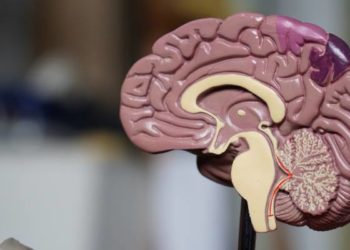Earlier thrombolysis associated with improved stroke outcomes
Image: PD
- While earlier tissue plasminogen activator administration following stroke is thought to lead to better outcomes, no large-scale studies have quantitatively analyzed this relationship.
- In this study, there is a significant relationship between earlier treatment and more positive outcomes in patients with acute ischemic stroke.
Evidence Rating Level: 2 (Good)
Study Rundown: “Time is brain” is a central maxim of acute neurology, as it has long been understood from experience and small-scale studies that thrombolytic therapy with tissue plasminogen activator (tPA) should be given as early as safely possible to maximize outcomes in patients with acute ischemic stroke. However, studies to date have not been sufficient to quantify this relationship, and as the accepted window for tPA administration widens (currently 4.5 hours from symptom onset in appropriate patients), it becomes increasingly important to understand risks and benefits of tPA, especially with regards to the importance of specific time of administration. In the largest retrospective chart review to date, the authors demonstrate a significantly decreased morbidity and mortality, as well as improved functional outcome, for every fifteen minutes of accelerated tPA administration. Moreover, they are able to identify numerous factors that affect the rapidity of administration, such as mode and time of hospital arrival, initial stroke severity, and stroke history.
These findings must be interpreted in light of the limitations inherent to retrospective chart reviews. While the authors employed rigorous selection criteria to ensure useful data, the quality of data is still dependent on the care team and cannot be controlled across institutions. Moreover, the disparate nature of data recorded in clinical charts limited the detail of clinical variables and outcomes that the authors could assess. That said, their findings strongly support the importance of early tPA administration and highlight some of the important variables that hospitals must consider as they attempt to optimize their ischemic stroke protocols.
Click to read the study, published today in JAMA
Relevant Reading: Guidelines for the management of patients with acute ischemic stroke
In-Depth [retrospective chart review]: The authors reviewed records from 58,353 patients registered with the Get With The Guidelines-Stroke database who had acute ischemic strokes between 2003 and 2012. All patients received IV tPA within 4.5 hours of symptom onset. The mean lapse between symptom onset and tPA administration was 144 minutes. When adjusted to account for baseline stroke severity, every 15 minutes of earlier tPA administration was significantly associated with decreased mortality, fewer tPA complications, less frequent symptomatic intracranial hemorrhage, increased rates of ambulation at discharge, and more frequent discharges directly to home, as opposed to rehabilitation facilities (all p<0.001). These relationships were also significant when analyzed across the 0-90, 91-180, and 181-270 minute time intervals. Patients were significantly more likely to receive earlier therapy if they arrived via EMS, arrived during peak hospital hours, had a history of prior stroke, carotid stenosis, or diabetes, were older males, or had a higher score on the NIH Stroke Scale.
By Jeff Dewey and Rif Rahman
More from this author: Music therapy reduces anxiety and sedative requirements in the ICU, Antioxidants, omega-3 lack benefit in age-related macular degeneration, Maternal anti-epileptic use linked to autism disorders in offspring, Lifestyle modifications vary based on socioeconomic status in cardiovascular patients (PURE Study), Duloxetine reduces neuropathic pain in chemotherapy patients
© 2013 2minutemedicine.com. All rights reserved. No works may be reproduced without written consent from 2minutemedicine.com. Disclaimer: We present factual information directly from peer reviewed medical journals. No post should be construed as medical advice and is not intended as such by the authors or by 2minutemedicine.com. PLEASE SEE A HEALTHCARE PROVIDER IN YOUR AREA IF YOU SEEK MEDICAL ADVICE OF ANY SORT. Content is produced in accordance with fair use copyrights solely and strictly for the purpose of teaching, news and criticism. No benefit, monetary or otherwise, is realized by any participants or the owner of this domain.









